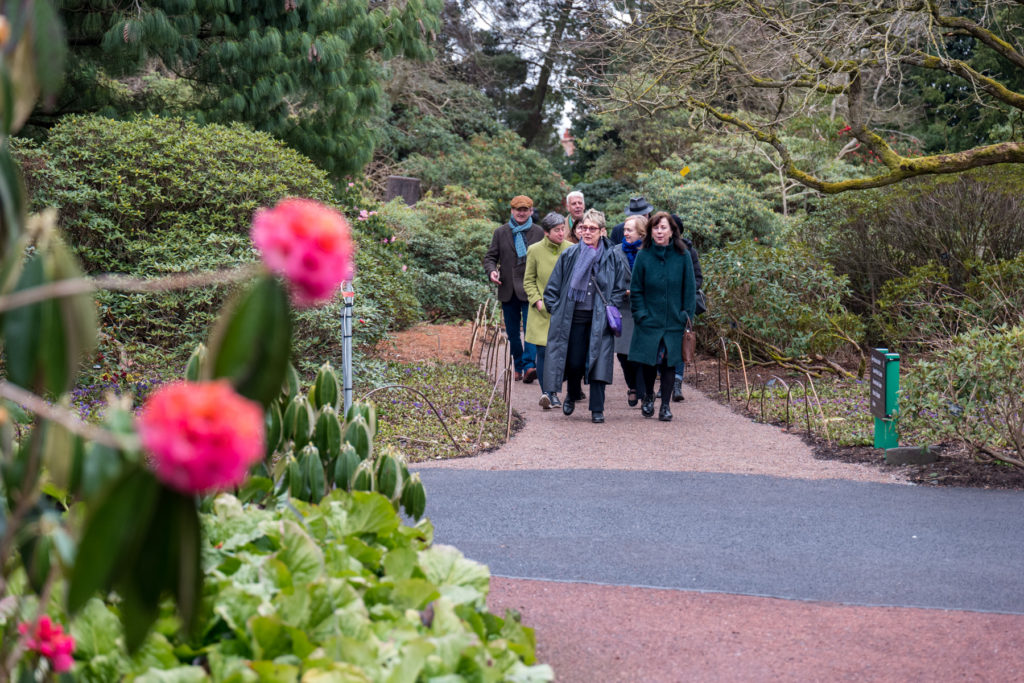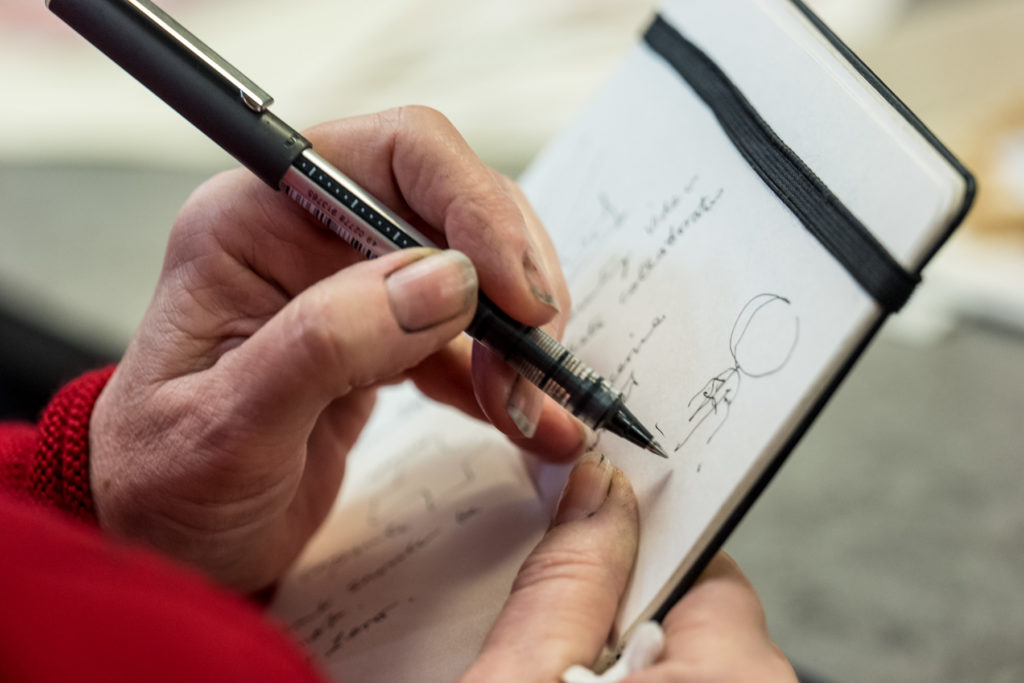
Photograph courtesy of Caterina Salvi
To complement her exhibition at Inverleith House, After Hortus Malabaricus: Sensing and Presencing Rare Plants, and as a part of her prestigious Leverhulme research fellowship, artist Siân Bowen held a fascinating micro-conference: Sensing and Presencing the Imperceptible, at RBGE. Travelling through the Herbarium, Archives, Inverleith House and finally pausing for thought and discussion at the Botanic cottage, on the 28th February 2020 it brought together a wide range of people, (including artists, academics and writers) and gave them an opportunity to learn more about Bowen’s research, share their thoughts about the exhibition, and explore notions of imperceptibility.
Klaudia Jaworska is in her third year at Edinburgh Napier University, studying International Festivals and Events Management and Marketing. As part of her course, she is currently carrying out a work placement in RBGE’s Public Engagement Department. Here, Klaudia shares her experience from the morning of the micro-conference
The conference began with a short introduction and welcome in the foyer of the Science Building. Lesley Scott, the assistant herbarium curator, took us to the Herbarium and shared intriguing and fascinating facts about plants and species stored within. This tour was an important insight into Siân Bowen’s process of creating her exhibition After Hortus Malabaricus, as this marked her four-year collaboration with RBGE, and, in particular, our Herbarium. Her work displayed in Inverleith House complements and draws on these rich archival collections.
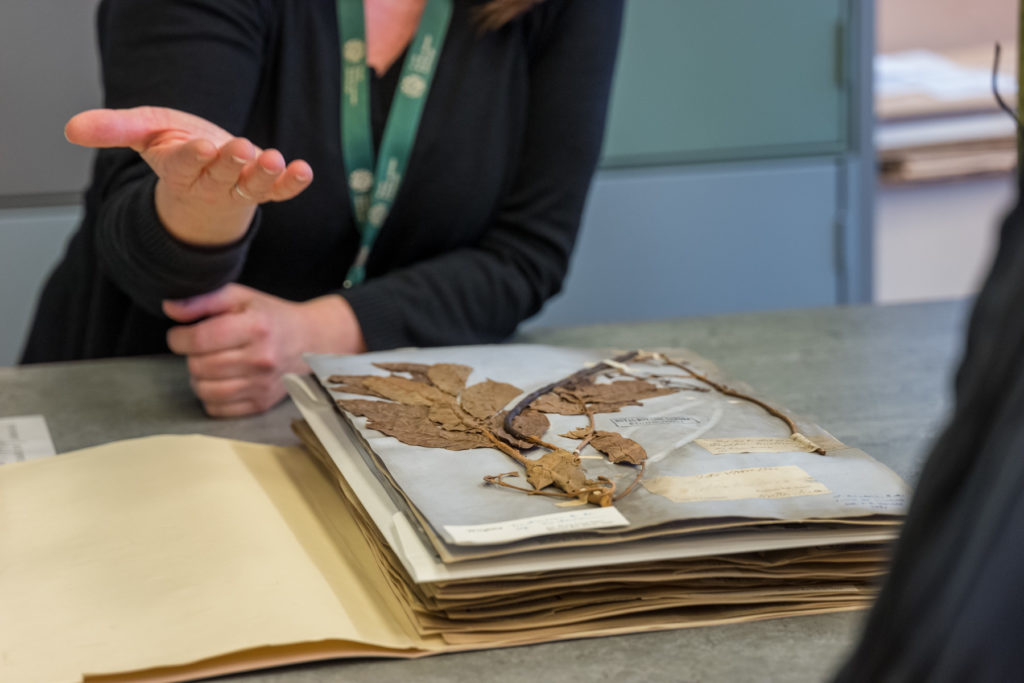
Photograph courtesy of Caterina Salvi
On this tour, participants learned about 300 years’ worth of collections which are ranked 20th in the world in terms of the number of plants, and are from every continent (including Antarctica!) These impressive collections have been an inspiration to many artists. Lesley explained to us how all the plants arrive at the Herbarium dried, as all the work is done in the field. The plants are frozen for three to five days, at a temperature of -30 degrees before they are presented in the collection.
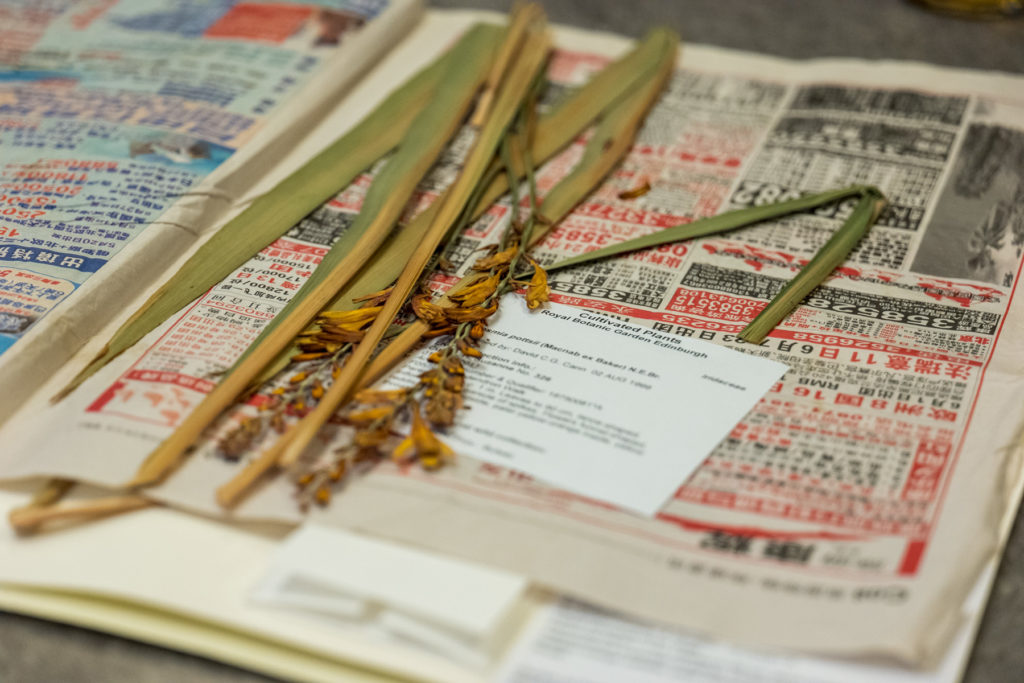
Photograph courtesy of Caterina Salvi
Plants which cannot be pressed are kept in the spirit collection – a collection of over 7,000 specimens preserved in fluid which are stored in glass jars. In the RBGE Herbarium you can find the African Ginger Flower, and orchids which, thanks to this process, will maintain their form forever!
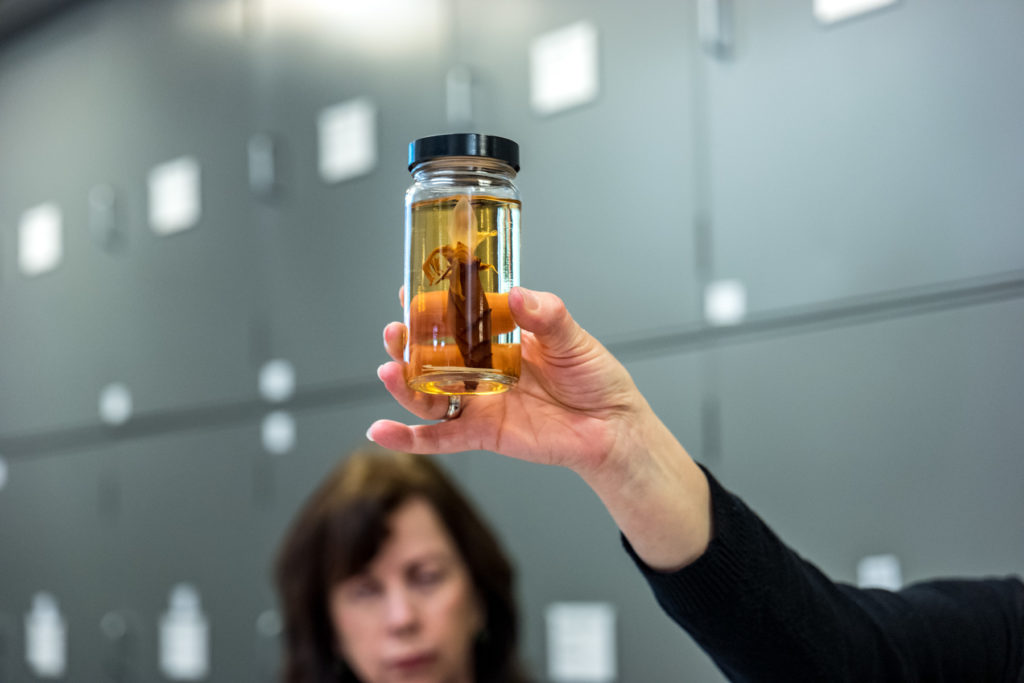
Photograph courtesy of Caterina Salvi
Huge, tropical plants can also be found in the RBGE Herbarium. They are too big to fit in the covers, so there are specially dedicated places for them. Amazingly, anyone can visit the Herbarium by appointment! If you have discovered a new plant, you can write its description here, and name it after anything you want; the place where you found it, the name of someone special to you, or even a car, as one scientist has done before! Also, if it’s rainy and you don’t feel like leaving your home, you can visit the RBGE website, where you can find information about the RBGE collection and specific plants. A great chance to do your own research from home!
During her Leverhulme fellowship, in the lead-up to After Hortus Malabaricus, Siân Bowen worked side-by-side with Dr. Henry Noltie: retired curator at RBGE and an expert on Indian subcontinental flora. Therefore, he was the ideal canditate to bring us closer to her work, by giving a talk in the RBGE Library and Archives, as the next part of the conference.
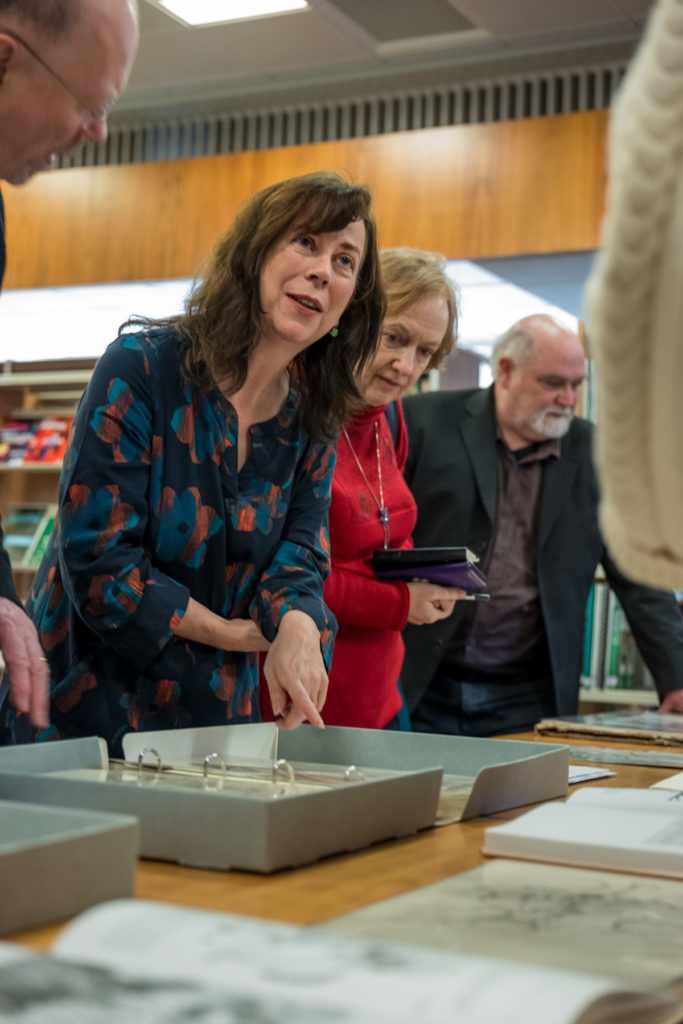
Photograph courtesy of Caterina Salvi
Henry spoke about ‘The Garden of Malabar Refigured: a set of mid-nineteenth-century drawings after the Hortus Malabaricus made for Hugh Cleghorn in Madras’. Hortus Malabaricus is a 17th-century publication which documents the botany of Cochin, on the West coast of India during the colonial era. It played an important role in discovering local Indian flora and recording traditional Indian medical remedies, as well as being a testament to the innovative reproduction methods used to create the drawings in print. Henry commended that Siân’s work draws strong parallels with the Indian artists’ recreations, as she plays with composition and scale in a similar vein to the way the Madras works do in relation to the original Dutch drawings.
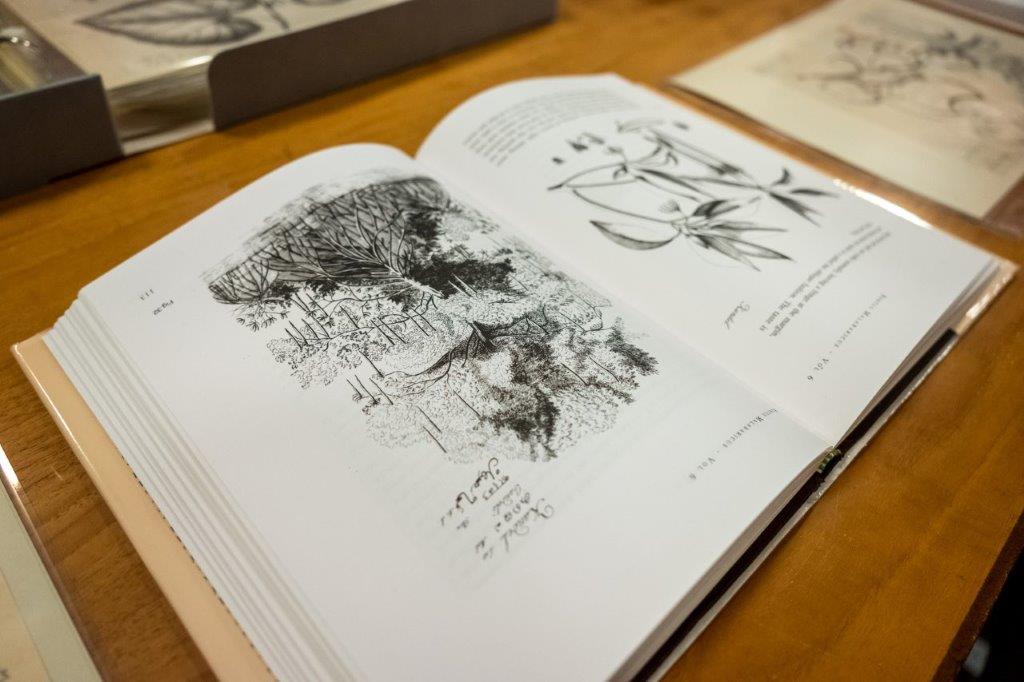
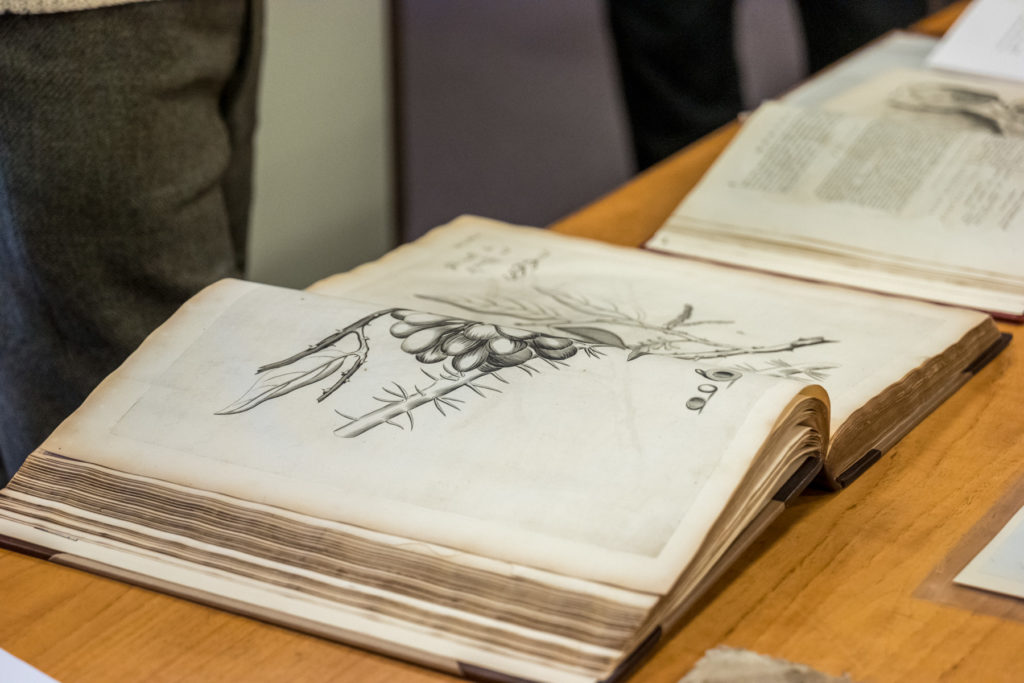
Photograph courtesy of Caterina Salvi
After thanking Henry and Lesley, and now equipped with a better understanding of the inspiration behind Sian’s work, we continued to the Botanic Cottage.
Published on Behalf of Klaudia Jaworska
Siân Bowen’s exhibition After Hortus Malabaricus was on display in Inverleith House, RBGE, from Jan 10th 2020.
We have posted our volunteer Alessandra Leruste’s take on the discussion-filled afternoon of the conference, click here to read it.
